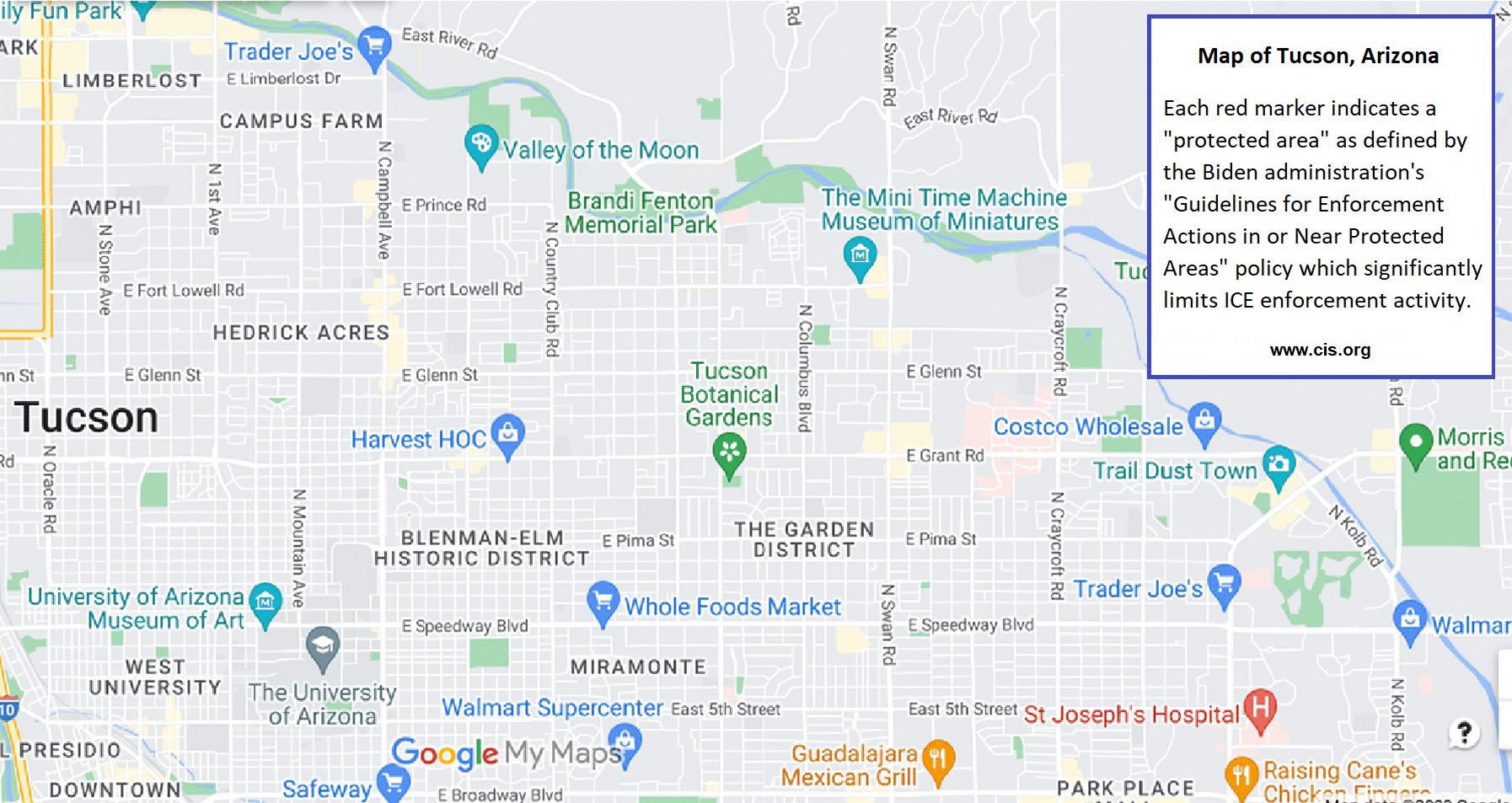A Path to Permanent Residence for ‘Temporary’ Afghan Parolees
The State Department announced in November the launch of the “Afghan family reunification landing page” to provide Afghan nationals in the United States with the “information and tools” they need to bring their family members here. Different avenues to pursue reunification depend on the U.S.-based Afghans’ immigration status or method of entry to the United States. The landing page identifies pathways and application processes for Afghans with U.S. citizenship, lawful permanent residence (LPR), refugee status, asylee status, as well as for Afghan parolees, including those subsequently granted Temporary Protected Status (TPS).
Soon after “Operation Allies Refuge” (July-August 2021), following the Taliban takeover of Afghanistan, the Biden administration began attempting to reunite family members of Afghan evacuees on American soil. The United States has “supported the reunification and resettlement of Afghan families” since August 2021, noted the State Department, but the job is far from over:
Although the United States has been able to successfully reunify some families, others remain separated, and continue to experience hardship and challenges. The purpose of this reunification landing page is to help those families which are still separated.
This new Afghan family reunification program comes 16 months after the withdrawal of U.S. troops from Afghanistan and the evacuation of some 89,000 Afghan nationals in the summer of 2021 under Operation Allies Refuge. Those evacuees were, for the most part, “paroled” into the United States for a period of two years. While immigration parole allows for temporary lawful presence in the United States, it does not provide any immigration status or path to lawful permanent residence (a green card) or another lawful immigration status. However, with this new Afghan family reunification initiative designed by the Biden administration, Afghan parolees will be able to sponsor their family members to come to the United States as refugees.
This is important because, unlike parolees whose status is, in theory, temporary, refugees are granted permanent resettlement. In fact, under U.S. immigration law, refugees are required to apply for a green card one year after arrival to the United States. The question remains: Why allow family reunification for Afghan parolees, since parole is meant to grant temporary protection only? And why give family members of parolees refugee status just because their relatives happened to be the ones who boarded U.S. planes out of Afghanistan in the summer of 2021? What is further interesting is that those who were randomly evacuated and were not able to access any type of Special Immigrant Visa (SIV) or asylum protection can, at some point, become green card holders or U.S. citizens via their family members who were allowed to join as refugees.
As I wrote shortly after Operation Allies Refuge, most of the evacuees were not actually American “allies”, i.e. Afghan nationals who risked their lives to help U.S. forces in Afghanistan. In fact, amid the chaos and the urgency, most who were evacuated had nothing to do with the U.S. government or any of its contractors; which meant they were not Special Immigrant Visa (SIV) holders or applicants. (SIVs are for Afghan interpreters/translators or “allies”, i.e. those who worked for or on behalf of the U.S. government and who faced a serious threat as a result of that employment.) Nor were the evacuees granted refugee status; hence, the use of parole as the entry ticket to the United States.
The 89,000 Afghan nationals who were evacuated were flown to U.S. military bases in the United States and overseas for proper vetting and screening, after which they were moved into American communities. On September 27, 2022, the last of the Afghan nationals departed the safe haven facility at the National Conference Center (NCC) in Northern Virginia outside Washington to settle in cities across the United States.
Despite the completion of operations at the NCC, the Biden administration remains “fully committed to continuing the work of welcoming and resettling Afghan nationals”:
Our commitment to our Afghan allies is enduring and, as part of the U.S. government’s efforts to continue welcoming our Afghan allies, we are adopting a new model whereby Afghan nationals arriving will travel directly to their new communities without a safe haven stop-over in the United States.
The U.S. government also remains committed to supporting and continues to develop processes for family reunification for Afghans. [Emphasis added.]
The objective is to allow Afghan nationals to come to the United States with “an immigration status that provides a path to long-term, permanent residence rather than parole which is temporary”. (Emphasis added.) Which meant that the Department of Homeland Security and other federal partners had to pivot toward “welcoming Afghan nationals through programs that have long-term durable status” like the Afghan Special Immigrant Visa program and the U.S. Refugee Admissions Program (USRAP).
The new family reunification program for Afghans falls under this policy direction. The program provides a path toward a “long-term, permanent residence” to Afghans by making refugee status available to family members of every Afghan national who was paroled (temporarily) into the United States.
Parole. Immigration parole is typically granted on a case-to-case basis for “no longer than one year” (those who need to remain beyond their authorized parole period can request re-parole). DHS Secretary Alejandro Mayorkas requested that a two-year parole be granted to all Afghan evacuees who had no other way to enter the United States.
Parolees can apply to adjust their status based, for example, on a qualifying relationship to a family member or apply for, in the case of Afghan parolees, either SIV status or asylum (with the benefits associated with such statuses). Congress created an expedited asylum process for Afghan parolees. The expeditious adjudication of asylum applications means conducting “the initial interview on the asylum application not later than 45 days after the date on which the application is filed; and in the absence of exceptional circumstances, issue a final administrative adjudication on the asylum application within 150 days after the date the application is filed”.
Parolees, unlike resettled refugees, have had limited access to benefits and services. This is where Congress intervened as early as September 2021 and passed legislation (see the Afghanistan Supplemental Appropriations Act, 2022, and the Additional Afghanistan Supplemental Appropriations Act, 2022,) to make Afghan parolees (current and future) eligible for the same resettlement assistance, entitlement programs, and other benefits provided to refugees. Those benefits are numerous; they include employment training, English-language training, job placement, cash, support with housing, community orientation, help accessing health services, enrollment in various benefits and welfare programs, etc. Refugees also receive Refugee Cash Assistance (RCA) and Refugee Medical Assistance (RMA) upon arrival. Those two programs (RCA and RMA) were extended from eight to 12 months.
Afghan parolees were also allowed to apply for a driver’s license or identification card under section 202 of the REAL ID Act of 2005 (division B of Public Law 109–13; 49 U.S.C. 30301 note), notwithstanding subsection (c)(2)(B) of that law.1
Those numerous benefits are not just available for the 89,000 individuals who were hastily evacuated out of Afghanistan during Operation Allies Refuge. Those paroled into the United States afterward, throughout fiscal year 2022 (which ended September 30, 2022), were also eligible for the same benefits. Moreover, spouses and children of those Afghan parolees arriving at any time after the end of FY 2022 (no time limit beyond that date was specified) will have access to those benefits as well.
Additional advantages were recently added to that list. Parolees are permitted to remain in the United States for the duration of the grant of parole and may apply for work authorization. Unlike refugees who are authorized for employment incident to status (meaning they are authorized to work indefinitely upon admission to the United States because their immigration status does not expire — and are not charged a fee for applying), parolees are not employment-authorized incident to status and must pay a fee (currently $410) for their EAD — unless the fee is waived or exempted, which is exactly what the Biden administration did.
The Biden administration is providing the “benefits of employment authorization incident to status normally accorded to refugees and a no-fee initial” (and replacement of an initial) EAD to Afghan (and Ukrainian) parolees in order for them to receive the same treatment as refugees. Effective November 21, 2022, Afghan parolees and their qualifying family members are considered “employment authorized incident to parole, which means that they do not need to wait for USCIS to approve their Form I-765, Application for Employment Authorization, before they can work in the United States”. They will not be charged any fee for these filings.
The family reunification process for Afghan parolees is detailed as follows (see the Afghan family reunification landing page for Afghans with other immigration statuses or methods of entry to the United States):
- Spouses and unmarried children under the age of 21 of Afghan parolees who remain parolees or were paroled into the United States and subsequently granted Temporary Protected Status (TPS) may be eligible for admission to the United States as refugees.
- Afghan parolees must begin the application process for their family members by filing Form DS-4317, Family Reunification Assistance for Afghan Parolees, with the Department of State. Birth certificates or marriage certificates must be provided.
- The U.S. government may be able to offer departure assistance for spouses and unmarried children under the age of 21 so they can depart Afghanistan to a country where they can complete the refugee process. They will only be able to enter the United States after approval by U.S. immigration officials.
End Note
1 The subsection in question, titled “Evidence of Lawful Status”, stipulates the following:
A State shall require, before issuing a driver’s license or identification card to a person, valid documentary evidence that the person — (i) is a citizen or national of the United States; (ii) is an alien lawfully admitted for permanent or temporary residence in the United States; (iii) has conditional permanent resident status in the United States; (iv) has an approved application for asylum in the United States or has entered into the United States in refugee status; (v) has a valid, unexpired nonimmigrant visa or nonimmigrant visa status for entry into the United States; (vi) has a pending application for asylum in the United States; (vii) has a pending or approved application for temporary protected status in the United States; (viii) has approved deferred action status; or (ix) has a pending application for adjustment of status to that of an alien lawfully admitted for permanent residence in the United States or conditional permanent resident status in the United States.






